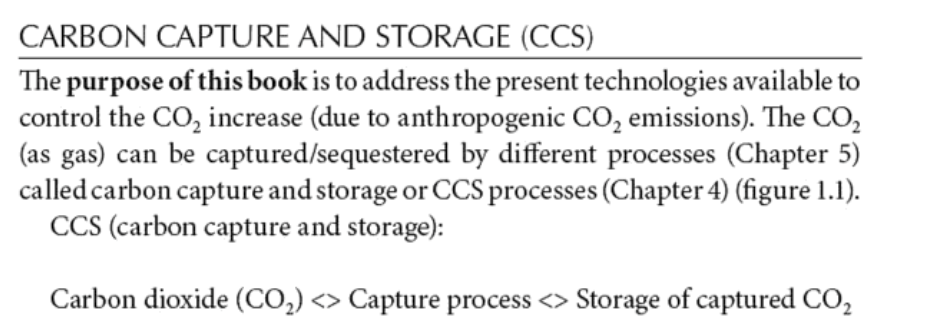< K. S. B I R D I >
< 2 0 2 4 >
>>>>>>>>>>>>>
SURFACE & COLLOID CHEMISTRY
APPLICATIONS:: THEORETICAL & TECHNICAL
SOAPS & DETERGENTS::::BUBBLES & FOAMS:::GAS & OIL RESERVOIRS::FRACKING & EOR
BIOPHYSICS:::SURFACE CHEMISTRY OF LUNGS & CARBON DIOXIDE
CLIMATE & CARBON (CO2) RECOVERY <RECYCLING> STORAGE
CHEMICAL EVOLUTIONARY EQUILIBRIUM (CEE)
MASS BALANCE & CEE OF CARBON DIOXIDE
ROLE OF SURFACE CHEMISTRY IN CLIMATE & SUN--ATMOSPHERE--EARTH (30% LAND + 70% OCEANS)
SOLUBILITY OF CO2gas IN OCEANS/LAKES/RIVERS & RAIN
FORMATION OF <ALL> CARBONECOUS SUBSTANCES FROM CO2gas & CO2aq
CEE MAINTAINS STABLE CONCENTRATION OF CARBON DIOXIDE IN AIR:::
-->FOR PLANTS (MINIMUM 200 PPM (0.02%))
--> & LIVING SPECIES (HIGHER THAN 10000 PPM (1 %) IS LETHAL)
<<>>
>>>>>>>>>>>>>>>>>>>>>>>>>>>>>>>>>>>>>>>>>>>>>>>>>>>>>>>>>
CO2gas IS BASIC MOLECULE FOR <ALL> LIVING SPECIES & PLANTS (FOOD & FISHERIES)
><
<<<<<<<<<<<<<<<<<<<<<<<<<<<<<<<<<<<<<<<<<<<<<<<<<<<<<<<<<<
<L E S S O N>
CHEMICAL EVOLUTIONARY EQUILIBRIUM (CE E )
THERE ARE DIFFERENT CEE
FOR EXAMPLE::CARBON DIOXIDE (CO2gas) IN AIR IS IN EQUILIBRIUM WITH CO2aq + CARBONATES + SHELLS (IN OCEANS/LAKES/RIVERS)
MASS BALANCE OF THIS SIMPLIFIED EQUILIBRIUM->
K(CO2) = (CO2gas) / (CO2aq)
= RATIO(estimated) == 750(Gtons)/75000(Gtons)
== 1 : 100 TO 1 : 50 (estimates)
(CONCENTRATIONS ARE FOR ::CO2gas : IN AIR :: CO2aq: IN OCEANS/LAKES/RIVERS)
<<<<<<<<<<<<<<<<<<<<<<<<<<<<<<<<<<<<<<<<<<<<<<<<<<<<<<<<<<<<<<<<<<<<<<<<<<<<<<<<<<<<<<<<<<<<<<<<<<<<<<<<<<<
CEE SHOWS THAT ALMOST <ALL> OF COgas IS PRESENT & CONTROLLED BY CO2aq
CEE THUS HAS STABALIZED THE <LOW> CONCENTRATION OF CO2gas
<<<<<<<<<<<<<<<<<<<<<<<<<<<<<<<<<<<<<<<<<<<<<<<<<<<<<<<<<<<<<<<<<<<<<<<<<<<<<<<<<<<<<<<<<<<<<<<<<<<<<<<<<<
<L E S S O N >
THERE ARE PRESENT DIFFERENT CONDITIONS WHICH NEEDS TO BE CONSIDERED
<1> TEMPERATURE (SURFACE OF EARTH) HAS CHANGED ABOUT <ONE> DEGREE SINCE THE INDUSTRIAL REVOLUTION
<2> IF YOU STOP USING ALL FOSSIL FUELS (& COMBUSTION)-THIS DOES NOT ADD ANY CO2gas--
CEE WILL REMAIN THE SAME AS TODAY
<3> EVEN IF YOU REMOVE ALL CO2gas---
CEE WILL MAKE CO2gas (420 PPM::0.04%) SHORTLY AFTER DUE TO K(CO2)
<<<<<<<<<<<<<<<<<<<<<<<<<<<<<<<<<<<<<<<<<<<<<<<<<<<<<<<<<<<<<<<<<<<<<<<<<<<<<<<<<<<<<<<<
< L E S S O N >
MANKIND DISCOVERED OIL/ GAS RESERVOIRS SOME 200 YEARS AGO ( IN DIFFERNT PARTS OF WORLD)
RECENT DATA ESTIMATES SHOW:: THAT THE TEMPERATURE (SURFACE) OF EARTH
HAS CHANGED (INCREASED) BY <ONE> DEGREE Co
<<<<<<<<<<<<<<<<<<<<<<<<<<<<<<<<<<<<<<<<<<<<<<<<<<<<<<<<<<<<<<<<<<<<<<<<<<<<<<<<<<<<<<<<<<
< L E S S O N. >
CARBON DIOXIDE (CO2) (<GAS OF LIFE>) DYNAMICS & MASS BALANCE
CO2 IN THE ENVIRONMENT IS THE MOST ESSENTIAL BUILDING MOLECULE
FOR ALL CARBONACEOUS SUBSTANCES AS FOUND AROUND EARTH
EARTH REVOLVES AROUND THE SUN (365 DAYS PER YEAR)
(EARTH AXIS IS TILTED ABOUT 23 DEGREES----
THIS GIVES RISE TO WINTER-COLD IN THE NORTH/SOUTH POLES
&
TROPICAL IN THE MIDDLE & OTHER VARIATIONS IN WEATHER)
EARTH ROTATES AROUND ITS AXIS ( 24 HOURS PER DAY)
THIS MAKES ALL CO2--ENVIRONMENTAL PROCESSES DYNAMIC
SUMMER // WINTER EVERY YEAR
DAILY SUN-DAYLIGHT OR DARKNESS-NIGHTS
SUN--LAND OR SUN--OCEANS INTERFACES
(DAILY AND YEARLY DYNAMICS)
<<>>
<<<<<<<<<<<<<<<<<<<<<<<<<<<<<<<<<<<<<<<<<<<<<<<<<<<<<<<<<<<<<<<<<<<<<<<<<<<<<<<<<<<<<<<<<<<<<<
< L E. S. S. O. N. >
HOW-COME THE <EQUILIBRIUM> CONCENTRATION OF CARBON DIOXIDE (C02gas)
IN AIR HAS REMAINED AS LOW AS NOW 420 PPM (0.042%)
(AND BELOW THE LETHAL CO2 EQUILIBRIUM CONCENTRATION (< 1%))
AFTER ALMOST 5 BILLIONS YEARS?
THIS IS A DIFFICULT QUESTION.
BUT!
THE <CEE> HAS THROUGH THE EVOLUTION
MAINTAINED FOLLOWING CONSTRAINTS ON THE
<EQUILIBRIUM> CARBON DIOXIDE CONCENTRATION
IN AIR::::
(I) BY KEEPING A VERY LARGE BUFFER IN THE OCEANS;
THE CO2gas CONCENTRATION IN AIR HAS
STABILIZED THROUGH CEE
(II) THE EQUILIBRIUM CONSTANT OF CO2gas==CO2aq
(IN CEE) HAS BEEN EVOLUTIONARY PHENOMENA
WHICH HAS GIVEN
ALL THE CARBONACEOUS SUBSTANCES
+
(PHOTOSYNTHESIS)
PLANTS + FOOD
+
FISHERIES
+
ALL LIVING SPECIES ON EARTH
<<>><<<<<<<<<<<<<<<<<<<<<<<<<<<<<<<<<<<<<<<<<<<<<<<<<<<<<<<<<<<<<<<<<<<<<<<<<<<<<<<<<<<<<<<<<<<<<<<
< L E S S O N >
CARBON DIOXIDE (CO2) AND GREENHOUSE (GHG) EFFECT
&
THE STATE OF CO2 (gas;aqueous)
CHEMICAL EVOLUTIONARY EQUILIBRIUM (CEE) OF ANY SUBSTANCE
( SUCH AS CO2 )
IS DETERMINED BY ITS PHYSICAL-STATE.
GHG EFFECT IS ONLY OBSERVED WHEN
THERE IS CO2gas
GHG EFFECT IS ABSENT IF THERE IS
CO2aqueous
THEREFORE<<<UNDER *CLOUDY/RAINY WEATHER* CONDITIONS
ONE WILL FIND MOSTLY COaqueous STATE
HENCE<<< ABSENCE OF ANY GHG
<<<<<<<<<<<<<<<<<<<<<<<<<<<<<<<<<<<<<<<<<<<<<<<<<<<<<<<<<<<<<<<<<<<<<<<<<<<<<<<<<<<<<<<<<<<<<<<<<
(P.S. THIS WEBSITE IS ACTIVELY REVISED:: MARCH 2024)
<<<<<<<<<<<<<<<<<<<<<<<<<<<<<<<<<<<<<<<<<<<<<<<<<<<<<<<<<<<<<<<<<<<<<<<<<<<<<<<<<<<<<<<<<<<<<<<<<











